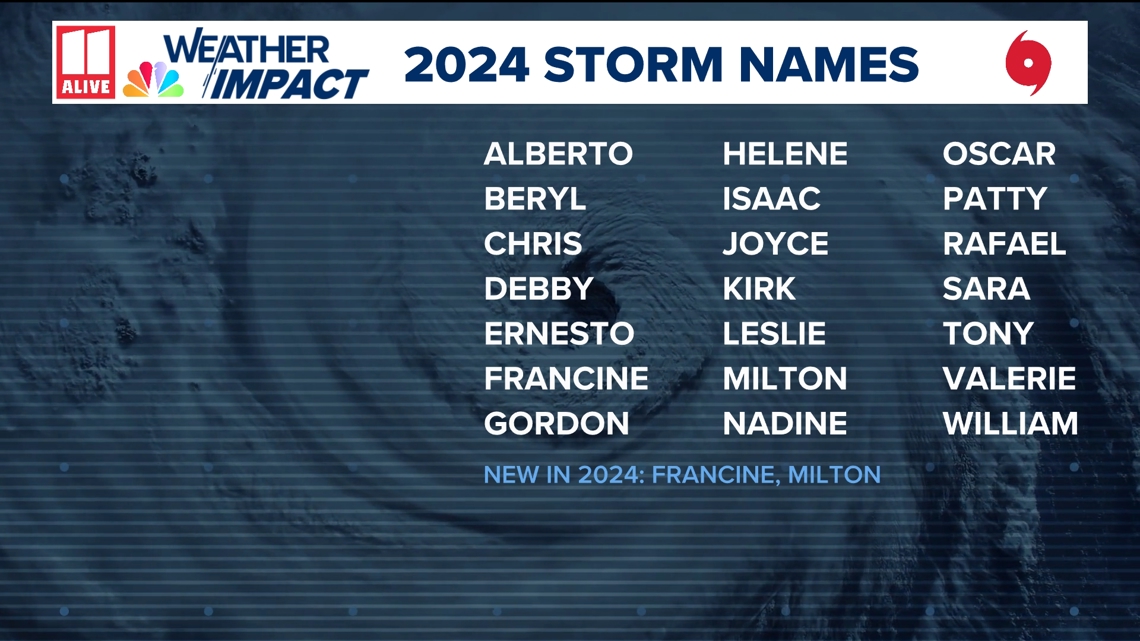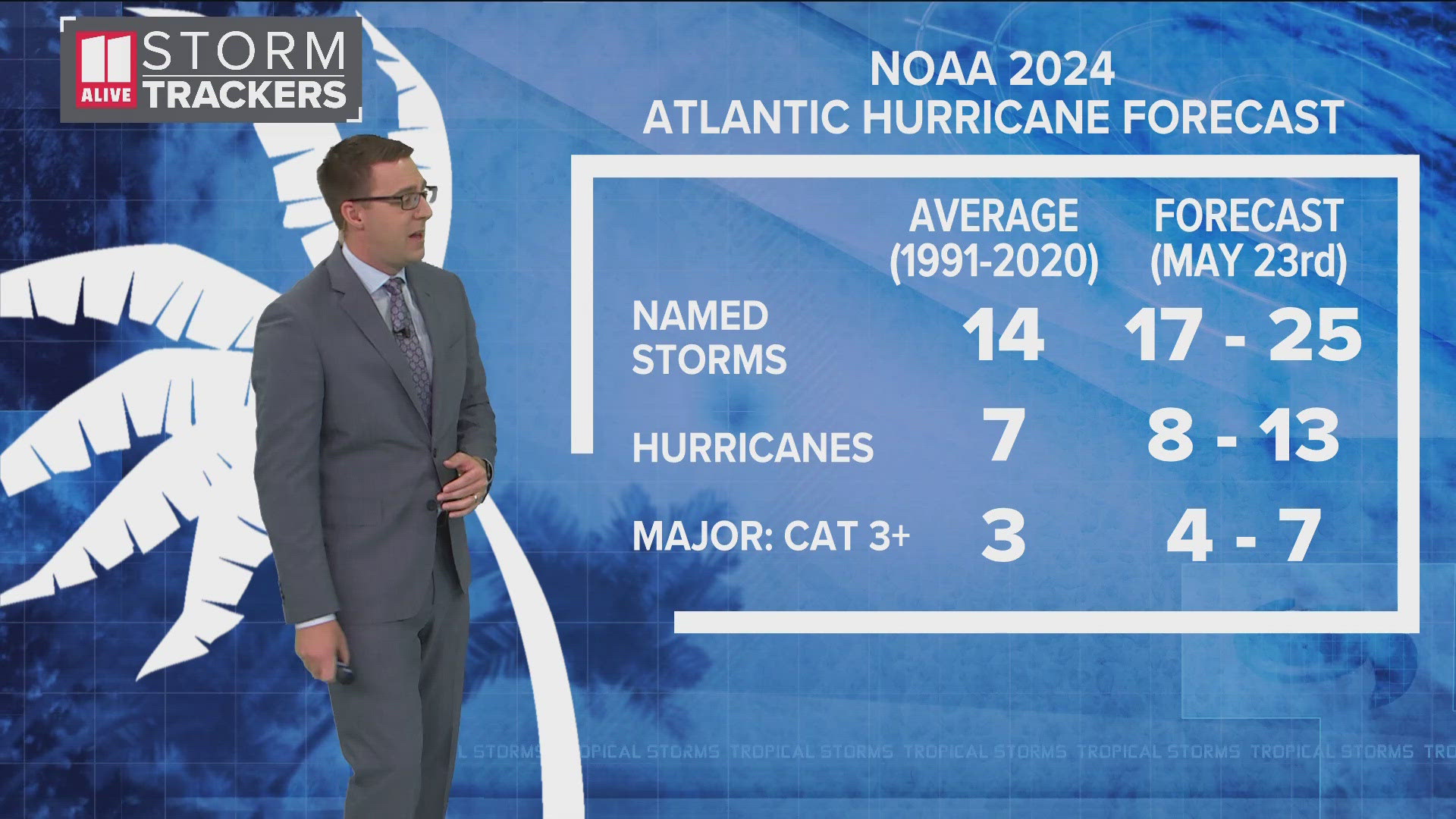ATLANTA — Hurricane season can devastate areas hit by significant tropical cyclones. To better identify and bring awareness to impacts from storms, they are given names. It is all dictated by the World Meteorological Organization, or WMO.
According to its website, naming storms "has proven to be the fastest way to communicate warnings and raise public awareness and preparedness. Assigning names to tropical cyclones makes tracking and discussing specific storms more straightforward, especially when multiple storms are active simultaneously. Naming also helps to avoid confusion among meteorologists, media, emergency management agencies and the public. Additionally, naming tropical cyclones can aid historical record-keeping and research on storm (behavior) and impacts."
So how do they come up with the list?
A committee meets and comes up with names that are short in length and easy to pronounce in the area of possible impact.
The list of 21 names is rotated every six years. In the Atlantic Basin, it starts with the letter "A" in the alphabet. They go through the alphabet, switching between a male and female name. They don't use every single alphabet letter. They skip the less-common letters of Q, U, X, Y, and Z.
When is a storm name retired?
The World Meteorological Organization retires names from storms that have caused significant devastation and damage. According to their website, "the only time that there is a change is if a storm is so deadly or costly that the future use of its name on a different storm would be inappropriate for obvious reasons of sensitivity."
In 2023, The WMO retired Otis and Dora, both from the Pacific Basin. They did not retire any Atlantic storm names. In 2022, they retired Fiona and Ian. "I" storms are the most commonly retired in the Atlantic Basin.
2024 Names
Here is this year's list of names. If storms blow this list, meteorologists would then move to a supplemental list of tropical cyclone names. The Greek Alphabet is no longer used.
This year's list of names started with Alberto. Names will continue to be utilized as new tropical storms (and hurricanes) form.



